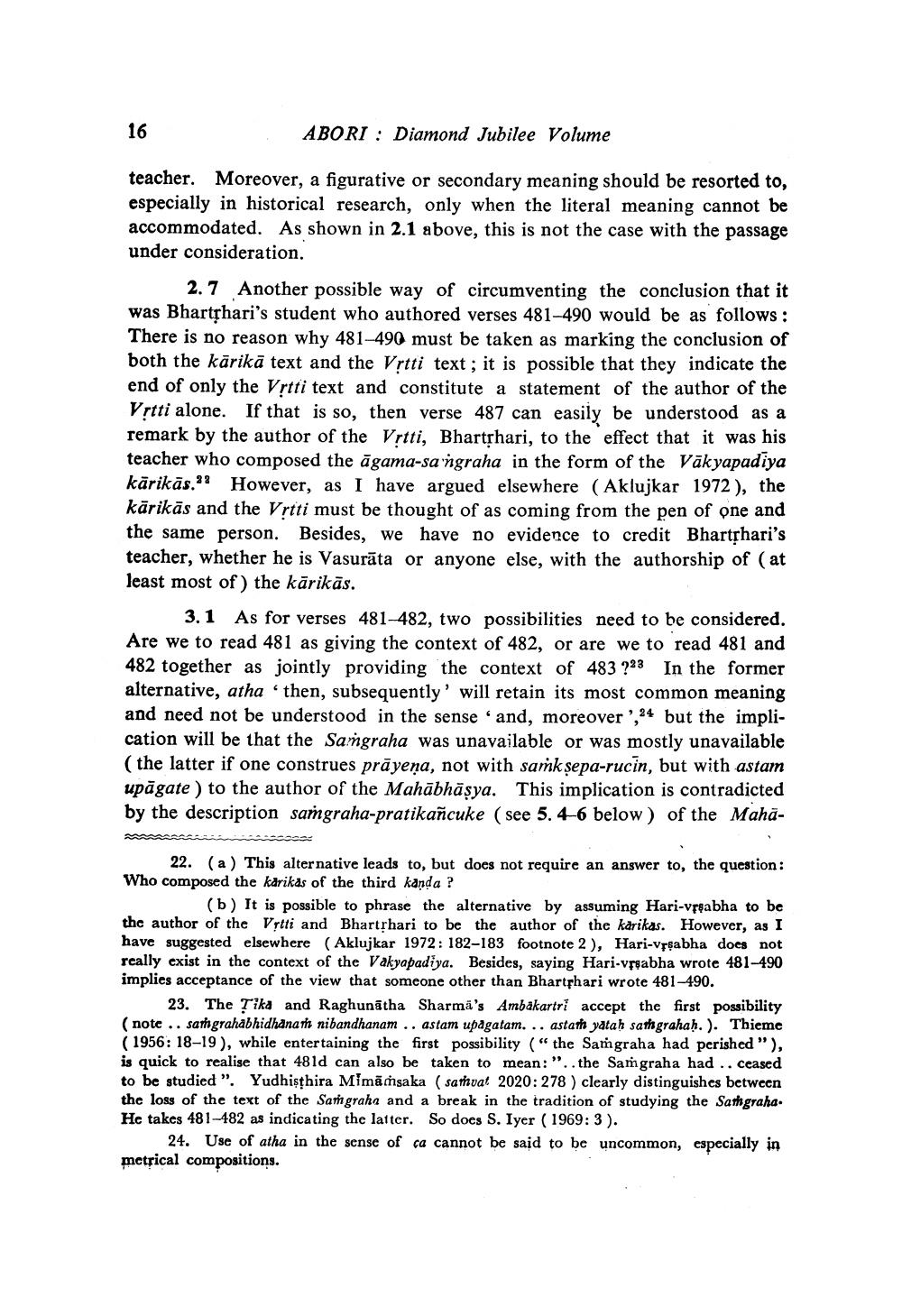Book Title: Concluding Verses Of Bhartrharis Vakya Kanda Author(s): Ashok Aklujkar Publisher: Ashok Aklujkar View full book textPage 8
________________ 16 ABORI : Diamond Jubilee Volume teacher. Moreover, a figurative or secondary meaning should be resorted to, especially in historical research, only when the literal meaning cannot be accommodated. As shown in 2.1 above, this is not the case with the passage under consideration. 2.7 Another possible way of circumventing the conclusion that it was Bhartphari's student who authored verses 481-490 would be as follows: There is no reason why 481-490 must be taken as marking the conclusion of both the kärikā text and the Vrtti text; it is possible that they indicate the end of only the Vrtti text and constitute a statement of the author of the Vịtti alone. If that is so, then verse 487 can easily be understood as a remark by the author of the Vrtti, Bhartphari, to the effect that it was his teacher who composed the āgama-sangraha in the form of the Vākyapadiya kārikās." However, as I have argued elsewhere (Aklujkar 1972 ), the kārikās and the Vrtti must be thought of as coming from the pen of one and the same person. Besides, we have no evidence to credit Bhartphari's teacher, whether he is Vasurāta or anyone else, with the authorship of (at least most of the kārikās. 3.1 As for verses 481-482, two possibilities need to be considered. Are we to read 481 as giving the context of 482, or are we to read 481 and 482 together as jointly providing the context of 483 228 In the former alternative, atha 'then, subsequently' will retain its most common meaning and need not be understood in the sense and, moreover ',24 but the implication will be that the Sangraha was unavailable or was mostly unavailable (the latter if one construes prāyeņa, not with samk sepa-rucin, but with astam upāgate ) to the author of the Mahābhāsya. This implication is contradicted by the description samgraha-pratikañcuke (see 5.4-6 below) of the Maha 22. (a) This alternative leads to, but does not require an answer to, the question: Who composed the karikas of the third kanda ? (b) It is possible to phrase the alternative by assuming Hari-vrsabha to be the author of the Vetti and Bhartrhari to be the author of the karikas. However, as I have suggested elsewhere (Aklujkar 1972: 182-183 footnote 2), Hari-Vrsabha does not really exist in the context of the Vakyapadiya. Besides, saying Hari-vrsabha wrote 481-490 implies acceptance of the view that someone other than Bharthari wrote 481-490. 23. The Tika and Raghunātha Sharma's Ambakartri accept the first possibility (note .. samgrahabhidhanam nibandhanam .. astam upagatam... astath yatah samgrahah. ). Thieme (1956: 18-19), while entertaining the first possibility ("the Samgraha had perished"), is quick to realise that 481d can also be taken to mean:"..the Saṁ graha had .. ceased to be studied ". Yudhisthira Mimāṁsaka ( samvat 2020:278 ) clearly distinguishes between the loss of the text of the Sangraha and a break in the tradition of studying the Sangraha. He takes 481-482 as indicating the latter. So does S. Iyer (1969: 3 ). 24. Use of atha in the sense of ca cannot be said to be uncommon, especially in metrical compositions.Page Navigation
1 ... 6 7 8 9 10 11 12 13 14 15 16 17 18
